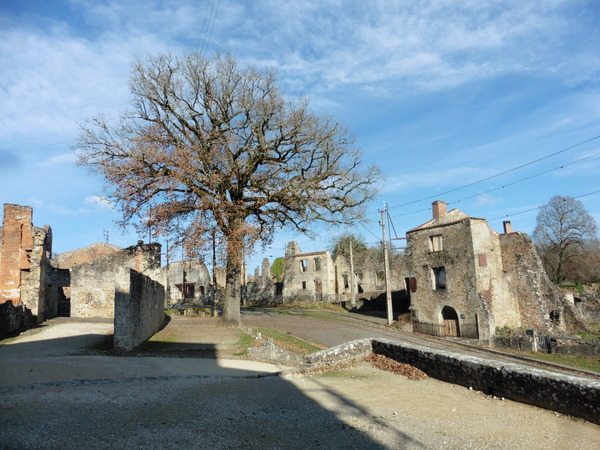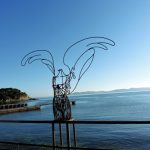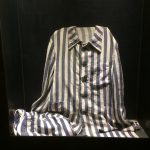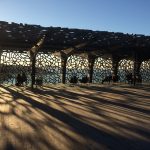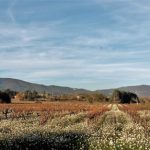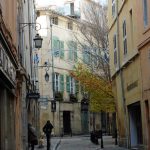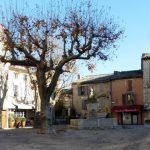Leaving Limoges this morning our first stop was the village of Oradour-Sur-Glane about 20 km’s from Limoges. It serves as a silent reminder of the brutality of war.
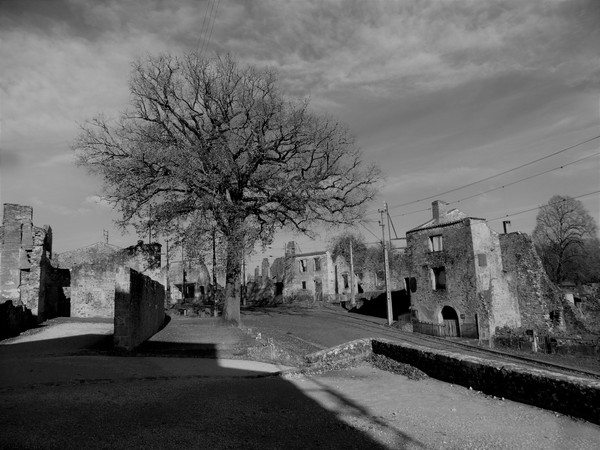
Time stopped at Oradour-sur-Glane on the 10th of June 1944. It was the day when the Nazis rounded up all the men, women and children of village and killed them. After the massacre the Nazi’s torched the village. When the war was over the French president Charles De Gaulle ordered the village to be maintained as a memorial and museum to all those who died. Since then a museum has been built on the edge of the village. It was at the museum we learnt about the story of Oradour-Sur-Glane.
Memory Center of Oradour
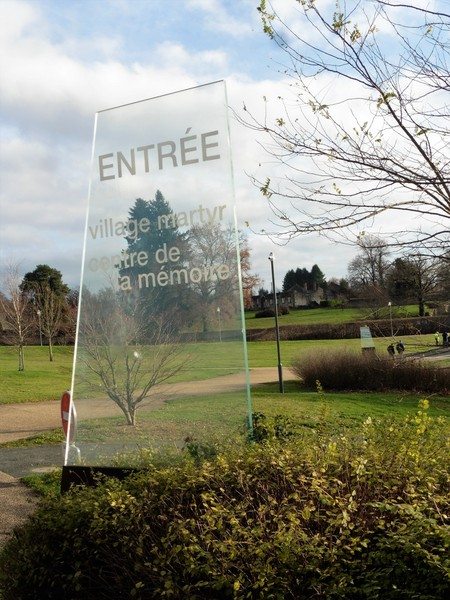
The Memory Center of Oradour is state of the art using mixed media such as video, story boards and audio guides. It tells the story of what led to the massacre. During the war France was divided into two sections. There was the German occupied zone in the north and the Vichy French zone in the south. After the D-Day landings the 2nd SS Panzer Division was ordered north from near Toulouse as reinforcement. The division included the 2nd SS Panzer Reconnaissance Battalion and the 4th SS Panzer Grenadier Regiment. The story goes that the commander of the 2nd SS Panzer Reconnaissance Battalion was captured by the Maquis du Limousin (local resistance).
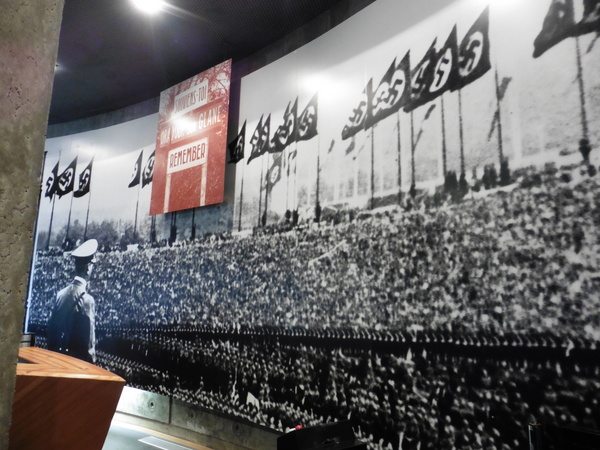
In response a meeting was held in Limoges, a village was picked and an exemplary action plan was implemented. The 4th SS Panzer Grenadier Regiment approached from Nieul and St Junien sealing off and surrounding the village. The villagers were herded into the town square where the men, women and children were separated. The men were ushered into six barns around the town where soldiers with machine guns opened fire. Meanwhile the women and children were ushered into the church. An incendiary was detonated and the soldiers shot anyone trying to escape. The town was looted and then torched. Fuel was poured over the dead bodies and they were burnt. The remains of the bodies were buried in a mass grave. In all 642 people died in the massacre.
The commander of the 4th SS Panzer Grenadiers justified his actions as a reprisal for kidnappings by the Maquis however, the museum explores other reasonings. One of those proposed was that the regiment had just been reinforced by volunteers from Alsace. The massacre was a “blooding” for the newcomers, a “right of passage” for members of the fanatical SS unit.
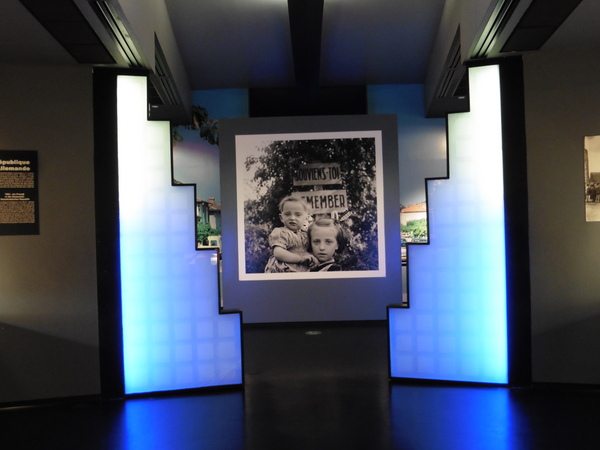
After the war the old village was left as it was and a new village was built nearby. Of the original 200 Waffen SS soldiers, 21 faced court. They consisted of 7 Germans and 14 Frenchmen. The 13 from French Alsace were given amnesty by the French government.

The survivors of Oradour-sur-Glane were outraged by the amnesties and for many years excluded the French Government from their commemorations. The new museum was built as a memorial to all those that died.
Oradour-sur-Glane
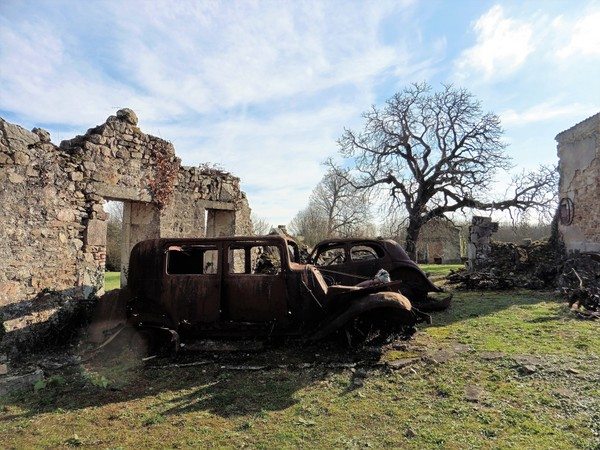
Walking through village of Oradour-sur-Glane is quite eerie.
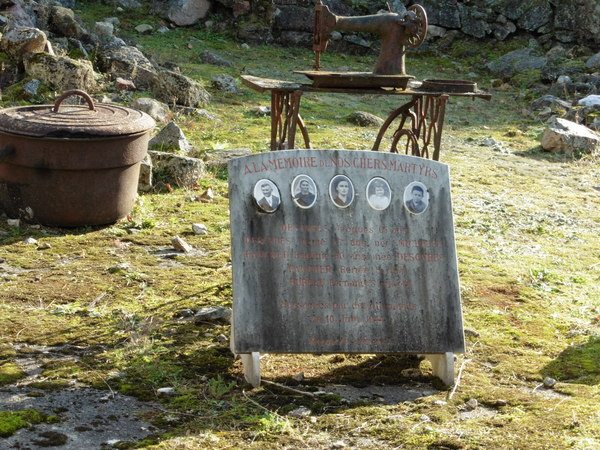
The fire blackened buildings, burnt out cars, and remains of personal items give the sense of being back in time. Around the town signs record where the massacres took place.
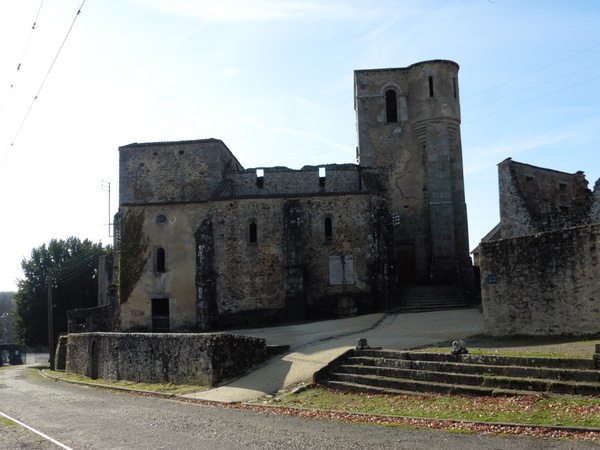
The most horrifying was the church, the woman and children of the village were herded here then all the doors were locked and barred. The soldiers then proceeded to set the roof on fire and stood by shooting anyone who managed to escape.
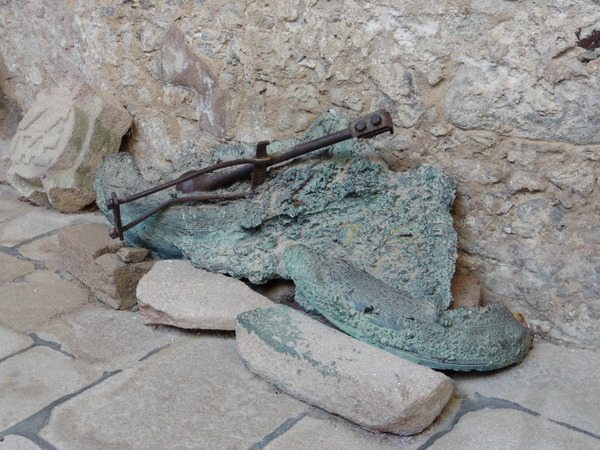
The remains of a child’s pram, the bullet holes, the melted church bell which fell through the roof at the height of the fire, tell the story of the horrors that happened in this place of peace.
Oradour-sur-Glane Memorial
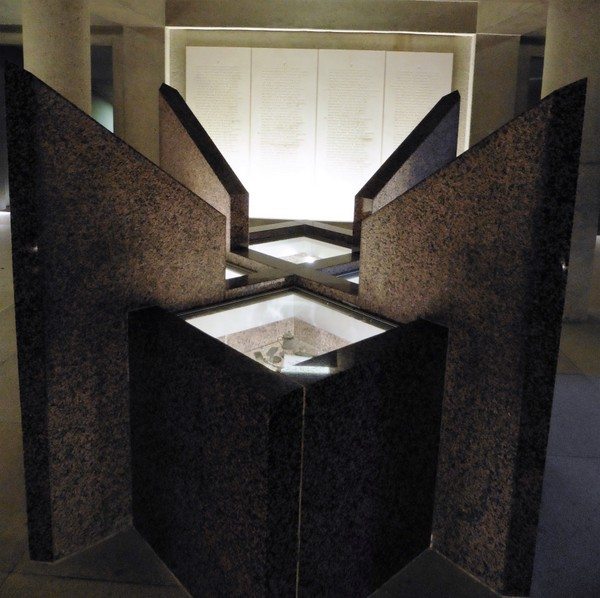
Behind the village is the memorial to Oradour-sur-Glane massacre. Beneath the concrete top the passage leads underground. Around the central chamber the names of the 642 people who were massacred are recorded. In glass cabinets around the chamber personal items recovered are on display.
Seeing the children’s prams with bullet holes in them is quite sobering. In the museum we learnt that this was not an isolated incident. There were many villages where massacres took place. Riding out of town seeing the whole abandoned village had us both pondering all day.
We headed back through Limoges before heading south. The weather was cool but clear so we got some miles covered. The bike really loves the cool dense air and runs much better. The wind became really blustery so on the highway we were copping a battering. It was nice to get off the highway and into the shelter of the country lanes.
Travelling through the countryside it was obvious that this part of the country is in the grip of winter as there’s not a single leaf on the trees. Large woodlands are like a big pile of pick up sticks, devoid of colour. The grape vines have all lost their leaves and all that’s left are the woody trunks and bare canes. On the pastures the cattle are hunkered down out of the bitter wind which has just started over the last week.
Sometimes I wonder about the settings on the satnav because we seemed to be travelling the most circuitous route.
Laroquebrou
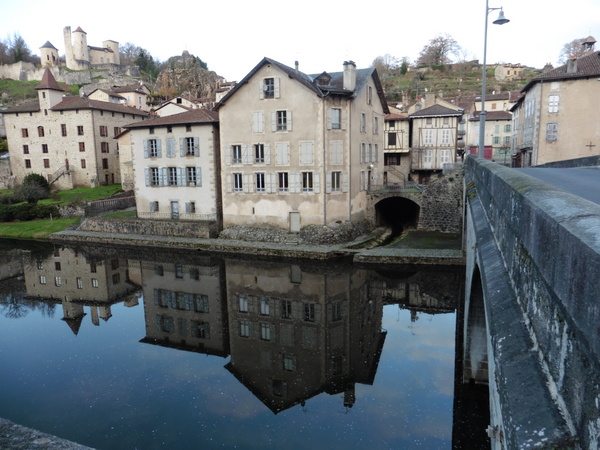
By late afternoon we were winding along the river towards Laroquebrou.
As we wound down the single lane road to Laroquebrou we had some lovely views of the old bridge and ruins of a medieval castle.
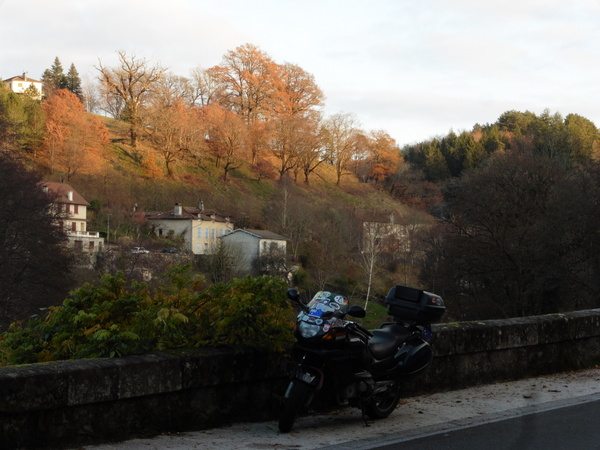
Finding the hotel was pretty easy, after parking up The Princess and stowing our luggage we headed back across the bridge to check out the old church.
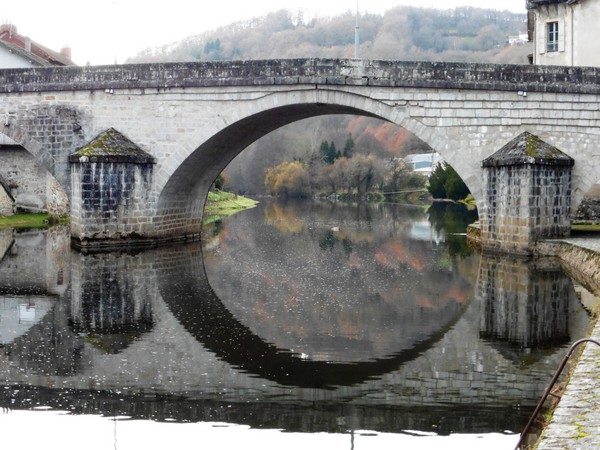
The sign on the bridge states that the bridge originated around the 13th century but was widened around the 17th century. These days all sorts of trucks and buses use it so it must be built pretty sturdily.
Overlooking the town on a large rock just below the castle is a statue of the Virgin Mary. The statue is a copy of Notre Dame de Fourvière in Lyon. It dates from 1887and still looks in pretty good shape.
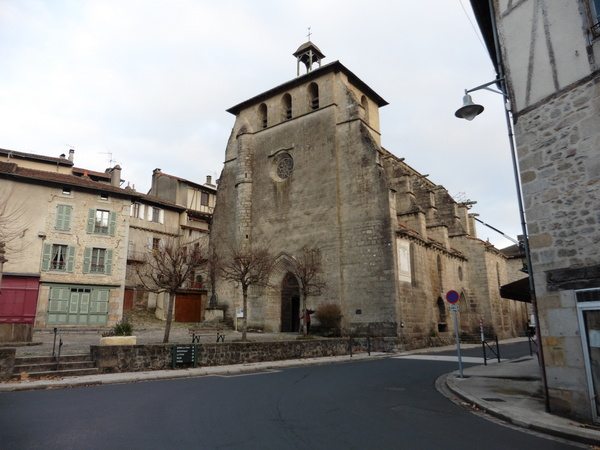
We visited the church which had a strange gothic style from the 13th century. The flat facades fitted with bells are a real feature of churches in this region of France. The old gothic style made the interior of the church dark and gloomy. As there was repair work underway on the church we didn’t linger too long.
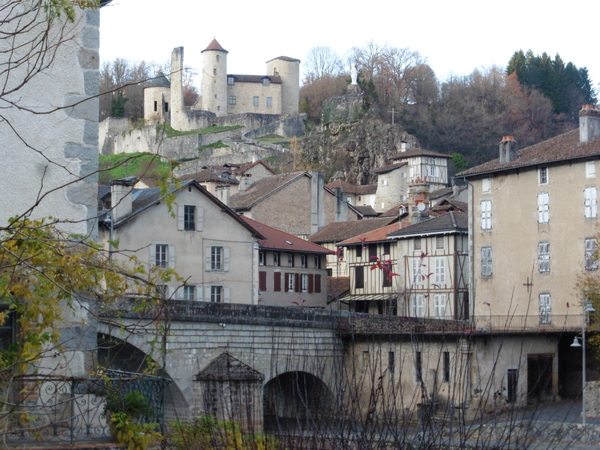
We took a walk up the hill towards the castle through the Merle quarter an area of town filled with half timbered houses. In earlier times the Laroquebrou was a town famous for leather goods. The fast flowing stream known as the Negrerieu runs down the steep hill through the Merle quarter. It was here where once weavers, cobblers and tanners, plied their trade. The stream was important to the tanners and emptied out near the old bridge.
Above the Merle Quarter sits Chateau Laroque. There’s not much left of the original 13th century fortifications. However at night it looks great with all the lights illuminating the ruins of the castle walls.
The town was pretty quiet and even the local bar only had a few patrons popped up at the bar drinking pastis. It’s hard to imagine that in tourist season that the town is packed with tourists.
After walking around town we headed back to the Hotel for dinner. Just when you’re thinking you’ve got the language down pat…. Boom “Lost in Translation moment.” A plate full of kidneys turned up with a side dish of two minute style noodles. There was one word I got right, “Froid” the sauce was stone cold. After a hit in the microwave the meal was a little better. Tomorrow we head to
Millau hopefully I won’t be woken in the middle of the night with a bout of food poisoning.
